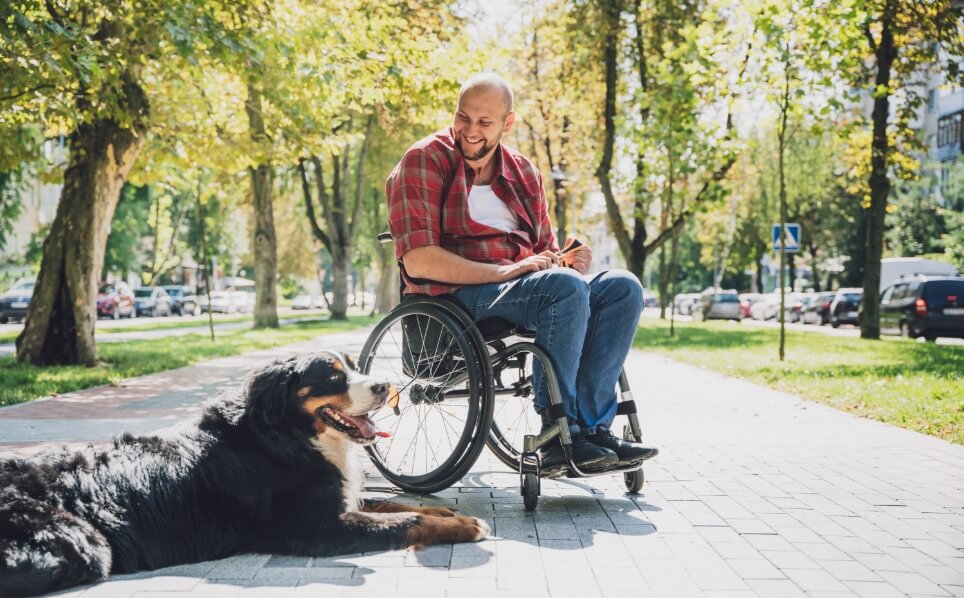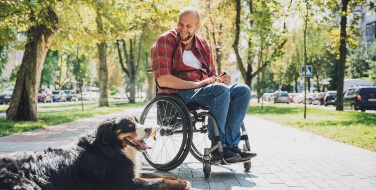New clinical data shows promising results from stem cell therapy. Patients often left with little hope after devastating injuries can now regain sensation and mobility.

At BioXcellerator, we offer stem cell therapy to treat a wide variety of different diseases and conditions—and each patient we treat comes to us with a unique story of coping with various injuries or health issues.
Among the most poignant of these stories are those brave individuals who come to us seeking help for treating spinal cord injuries. Unlike many diseases that emerge over time, these serious and disabling injuries come on suddenly.
Think about it. Envision that you’re leading an active and healthy life when a tragic accident severs your spinal cord. That instantaneous event could leave you paralyzed, unable to move your arms or legs. The idea of not being able to walk, hold your child in your arms, put on a shirt, or even control your bowel or bladder function seems too devastating to even consider. Life seems bleak.
Even worse—victims are left with little hope. For other conditions we treat, there are other options available in addition to stem cell therapy. But a patient with a severed or damaged spinal cord is usually offered little hope for any future improvement.
But today, new advanced stem cell treatments do offer hope for many spinal cord injury victims based on evidence that suggests that this type of therapy can lead to some functional recovery.
In fact, BioXcellerator’s Scientific Director Dr. Lucas López has just released a report based on actual data from patients we’ve treated. Research by Dr. Lopez and his team of epidemiologists suggests that stem cell therapy using mesenchymal stem cells may help ease inflammation in a way that can restore some lost sensation and mobility. Although spinal cord injury damage cannot be completely repaired (at least not yet), the data shows that many patients can recover more function than previously thought possible. And these improvements can make a big difference in improving quality of life.
In addition to thanking Dr. Lopez and his team for their work, I also want to recognize our entire medical staff who treated these patients—and extend thanks to all of the patients who helped us by allowing us to collect follow-up data on their progress.
Ongoing Stem Cell Research: Encouraging Progress in the Science of Regenerative Medicine
At BioXcellerator, we take pride in collaborating with the global scientific community to develop new treatment protocols based on ongoing follow-up studies. Benchmarking results against other treatments helps improve outcomes and inspires our scientists to explore new areas of research.
Our report, “Stem Cell Therapy for Spinal Cord Injury: Patient Treatment Results at BioXcellerator” includes follow-up data from 32 patients we’ve treated for such injuries over the past two years. Our Chief Medical Officer, Dr. Karolynn Halpert, has supervised the development of treatment protocols by our medical team to help patients with these serious injuries.
Most of these patients had suffered complete, or nearly complete, loss of motor function and sensation below the location of their injury.
Each patient received between one and four treatments with our Signature Cells. Over the course of their treatments, patients were evaluated based on a widely accepted standardized scale to assess these injuries—the American Spinal Injury Association (ASIA) scale. Our report shows that stem cell therapy can help:
- Regain sensitivity: Patients treated three or more times improved based the ASIA “pin prick” assessment—with an overall median increase from 46 to 54 points—or about 17%.
- Improve motor function: Patients treated three or more times demonstrated more mobility, an overall median increase from 12 to 18 points based on the ASIA scale.
This is hopeful news indeed, but numbers alone don’t reflect the optimistic future that many similar patients could enjoy in the years ahead.
It’s the Little Things: From Tragedy to an Improved Quality of Life
Back in 2019, we treated Dustin Bunch. He’s a California firefighter with a wife and two children who suffered a devasting boating accident that left him a quadriplegic.
As Dustin told us after his accident, “I couldn’t move anything below my neck and was not ever supposed to be able to move my arms and legs again. That was rough.”
But after a series of stem cell treatments, Dustin says that he’s recovered a lot more function. He said, “I can pick up a cup, I can drink my own water, I can start to take my own shirt off.”
“It’s the little things,” he points out. “My daughter likes to take my hat off sometimes and now being able to put simply put my hat back on and hold her … I cherish these moments. All these are things I couldn’t do six months ago before my stem cell treatment at BioXcellerator.”
Another patient we treated, Caroll Comes, had sustained a serious injury in a horse accident with damage to her spine that left her a paraplegic. She had researched stem cell therapy and told us she found out that “stem cell treatment in the U.S. is definitely not as advanced,” which is why she decided to travel to our state-of-the-art clinic in Colombia for treatment.
She’s right. At BioXcellerator, our proprietary protocols for creating infusions of stem cells with the highest possible potency aren’t available at U.S. clinics because current FDA regulations don’t allow such treatments.
How Stem Cell Therapy Works: The Body Knows How to Heal Itself
Stem cells help repair damaged tissue by supporting the body’s natural healing processes. When cells die or become damaged, in some cases your body uses stem cells that can turn into specific types of cells to help promote healing. So, for example, if you suffer a burn, your body turns stem cells into new skin cells. If you injure a joint, those stem cells can be used to become new cartilage cells to heal that damage.
This natural process is why Dr. Halpert often points out that “the body knows how to heal itself”—using stem cells.
In many cases the body does not have enough stem cells available to heal serious damage. But with an infusion of millions of high-potency stem cells, the body has more cells available to help heal even severe injuries.
Many studies have shown that a specific type of stem cell – mesenchymal stem cells from umbilical cord tissue—modulate the body’s inflammatory response in a way that can help regenerate cells such as nerve fibers. Research also shows that stem cells can help prevent cell death in areas spared from injury and promote “remyelination” to help insulate and protect nerve fibers.
These cells can indeed help some patients who have been told to expect little to no improvement recover some lost function, restore sensation, and improve their lives in spite of even the most devastating of injuries.
At BioXcellerator, we’ve developed a proprietary process for screening cells and then purifying those cells that meet specific criteria for high potency. These cells are then cultured and expanded into infusions of millions of Signature Cells.
Overall Health Benefits: More Evidence to Support a Natural Approach to Healing
One of the trends we take note of as we compile and analyze our research is not limited to the specific disease or injury being treated, but to overall health benefits of stem cell therapy.
Reports from many of our patients include not only alleviation of specific symptoms, but more general health benefits—including more energy and vitality as well an enhanced overall sense of well-being.
Improvements like these were also mentioned in our report. Although these outcomes are noted as “subjective” because they are not based on a standardized scale, the report does point out that even after just two stem cell treatments, some patients report better sleep, more energy, and less need for pain medications.
Yes, more research is needed—but I’m glad that patients like Dustin and Carol have improved their lives. Hopefully, our work will inspire other organizations to collaborate with us on more comprehensive studies that improve outcomes for spinal cord injury victims and demonstrate the potential for stem cell therapy as effective—especially because it’s based on the body’s natural healing process.


